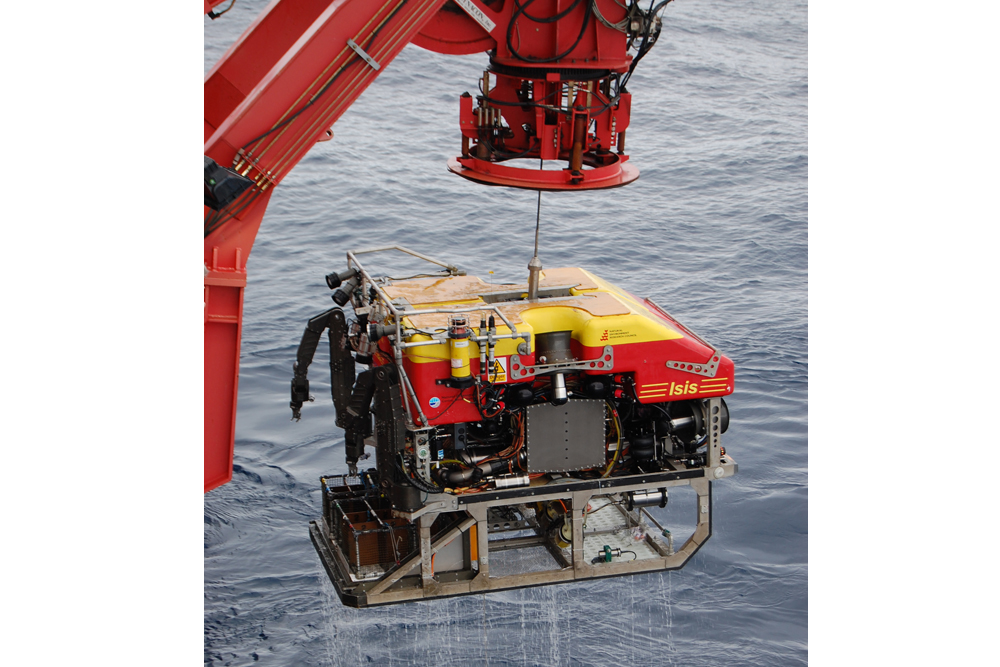
New Ocean Crust May Form Slower Than Thought

The crust that makes up the bottom of the world's oceans is constantly being generated along mid-ocean ridges, mountain ranges that look like the seams of a baseball on the seafloor.
The basic process of new ocean crust formation is known, but exactly what happens in the volatile environment of the ridges, and how fast it happens, isn’t well understood.
A new study that examined some of the minerals that make up new ocean crust suggests that the formation process may be slower and less uniform than previously thought.
New crust and the 'mush zone'
Mid-ocean ridges are the boundaries between tectonic plates and are the place where the plates spread apart from each other. Magma from the underlying mantle erupts at the edges, then cools and solidifies to form new ocean crust. This new crust is gradually pushed away from the ridge by more new crust, eventually traveling the across the plate — a process called seafloor spreading — and back into the Earth's interior at a subduction zone, where one tectonic plate dives beneath another.
The speed of crust formation varies from ridge to ridge: Some fast-spreading ridges produce up to 6 inches (15 centimeters) of new crust per year, while slower-spreading ridges creep along at just 2 inches (5 cm) per year.
Matthew Rioux, a researcher at MIT, analyzed pieces of ocean crust from the East Pacific Rise, a mid-ocean ridge 1,200 miles (1,900 kilometers) off the west coast of South America that is one of the fastest-spreading ridges in the world. By looking at the minerals within the crust, Rioux and his colleagues could get an idea of the environment in the "mush zone," which is part liquid magma, part crystallized rock, and determine the ages of different parts of the rock.
Sign up for the Live Science daily newsletter now
Get the world’s most fascinating discoveries delivered straight to your inbox.
Scientists have thought that magmas that form new crust at fast-spreading ridges rise up from the depths, quickly crystallize, and then push away from the ridge to form new ocean floor. If this were the case, every part of a rock should be of a similar age, since they would have crystallized more or less simultaneously.
But the team found that that the opposite happened: Two of the four rocks samples had a mineral called zircon that showed a wide array of ages, meaning different parts of the rock crystallized into new crust at different times and that crust formation takes longer than expected.
Fast and slow spreading
Rioux says there are a couple of possible explanations for the surprising finding. One possibility is that the "mush zone" gets "recharged" by new magma spewing out from the mantle — as new crust starts to solidify, magma reheats it, turning parts of it back into liquid that hardens again later on. Another possibility is that magma intrudes into already formed rock — older zircons would stay intact as they are resistant to heat, while newer ones would form around them.
And if any of this mixing happens at fast spreading ridges, it is likely to occur at slower ones as well, where the magma has more time to mix with the new crust.
"It's a step forward in our understanding of how these ridges work," Rioux said in a statement. "Dating of the oceanic crust will allow us to better understand how much variation there is between different mid-ocean ridges, how those variations relate to tectonic setting, and, ultimately, what the data tell us about the magmatic processes during formation of a very large fraction of the Earth's crust."
The research, detailed in an April issue of the journal Nature Geoscience, was funded by the National Science Foundation and the Natural Environment Research Council.
Follow OurAmazingPlanet for the latest in Earth science and exploration news on Twitter @OAPlanet and on Facebook.











